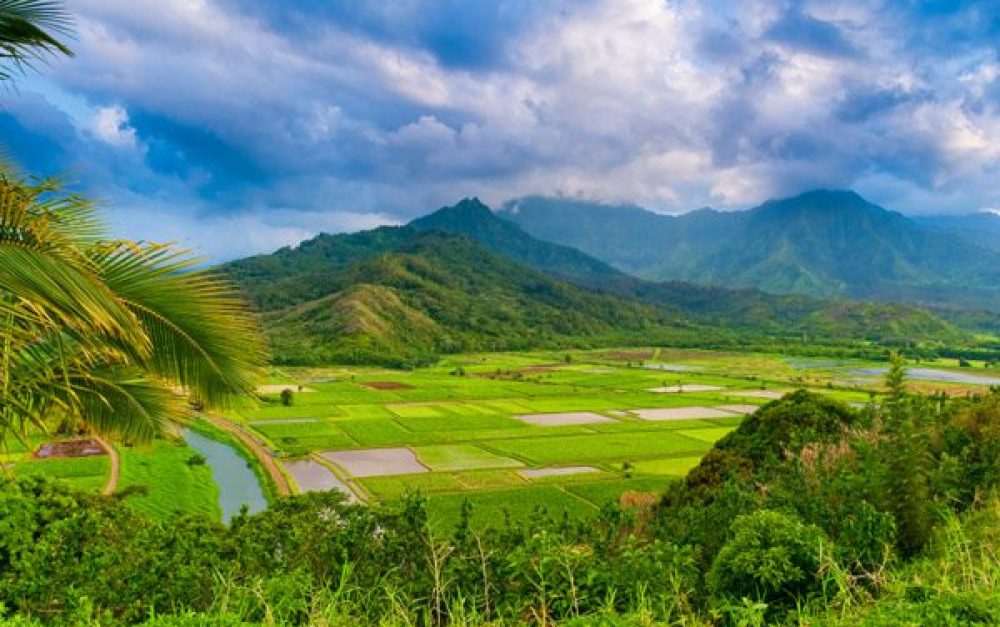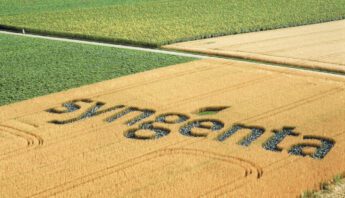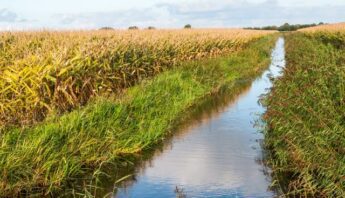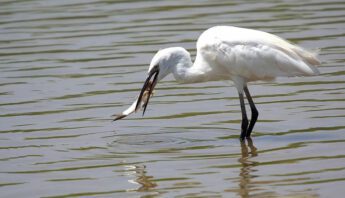Whew, three islands in four days. I recently returned from a whirlwind speaking tour in Hawai'i with Dr. Tyrone Hayes covering issues of pesticides, corporate control in agriculture and genetically engineered (GE) seeds.
Addressing the topic in high school auditoriums and community health clinics, it’s increasingly clear that people across the state want to build a food system that feeds them, protects community health and fragile ecosystems, and offers fair employment — including pushing back against corporate takeover of the islands' farming land. And they're making real headway.
Communities on several islands are banding together, including people on Kaua'i who faced corporate bullying but still managed to get a pesticide protection law passed. And now, as I’ve reported before, four of the world’s largest global pesticide corporations are suing Kaua’i to overturn this new law and maintain the practice of applying hazardous pesticides to fields next to schools — including Syngenta's flagship herbicide, atrazine.
But teachers and parents on the island still aren't backing down, and PAN is right there with them; we've joined with the County of Kaua'i to defend the new protective law and progress toward keeping community air and water pesticide free.
The atrazine battle
Listening to Dr. Hayes on our speaking tour, I was reminded that he's no stranger to corporate bullying. Syngenta’s top science goal, as revealed from handwritten company notes released in a legal settlement, was simply stated as “discredit Hayes.” And it’s no wonder why. He’s shown that even in very low doses, those below what EPA regulates in drinking water, atrazine can “chemically castrate” frogs. And based on research from his colleagues, those same effects play out in many other animal species and pose serious concerns to people.
From GE test fields in Hawai'i to corn fields in Iowa, too many of us are routinely exposed.
His research on atrazine is also directly related to what’s happening on the islands. The chemical has a history of being used in local industrial farming operations; it’s still used in sugar cane operations on Maui and appears to be used in most of the genetically engineered seed operations.
PAN has long worked to push EPA to adopt better safeguards from atrazine — as Hayes' research shows is necessary. From GE test fields in Hawai'i to corn fields in Iowa, too many of us are routinely exposed to this harmful chemical. In fact, we've worked with communities throughout the Midwest to document levels of concern in drinking water.
The call for policies that result in tangible new protections continues to grow stronger across the country. And this is exactly what atrazine's maker, Syngenta, is afraid of — and why pesticide and GE corporations are pushing back.
Mixtures make matters worse
The concern on Hawai'i (and elsewhere) doesn’t stop with atrazine. As Dr. Hayes points out, the cocktail of pesticides — as he’s seen early evidence from runoff of different industrial farming operations — can amplify the impact of individual chemicals.
Dr. Lorrin Pang, a health officer for Maui County (but speaking in a private capacity), shared this analogy on the tour:
“When I cook diner by myself and my mother cooks dinner by herself, we can only do so much alone. When we work together, we can cook a feast. The same is true of pesticides working in combination. But there’s no feast to be had.”
The potential effect on communities and the environment from combinations of pesticides may be profound. State and federal regulators don’t test these effects and by allowing widespread use of dozens of hazardous pesticides at the same time, the effects can be compounded.
As Hawaiians demand more information about what’s being applied around their communities, and push for modest protections, it’s increasingly clear that the future of the state's food and farming system is at a tipping point.
Returning to what works
Not only are Hawaiians demanding transparency and protections from hazardous pesticides, but they’re also trying to change the way crops are grown on the islands.
People on Moloka’i are returning to traditional and effective aquaculture practices. Touring the only working Hawaiian fish pond in the world with Ua Ritte and Hano Hano Naehu, I learned all about using rock walls, tidal flows and natural springs to harvest wild fish from the ocean while also supporting healthy fish populations. These practices, implemented in 67 fish ponds on the island, at one point fed thousands of Hawaiians on the island.
But these practices, and those of organic farming on the island, are in direct conflict with the "Big 6" business as usual. Monsanto is dipping deeper and deeper into precious fresh water supplies on the island, and Hano likens it to a sponge just below the surface of the island.
When the corporation sucks water up for industrial GE seed operations, it quickly steals water away from the rest of the island — and farmers. And without that water, the traditional and sustainable forms of feeding the island with wild fish are untenable. And water for islanders carving out small farms to grow food crops — including fruits and vegetables — is in jeopardy.
Given what I’ve seen on the islands, Syngenta, Monsanto and the rest of the Big 6 are picking a fight they can’t ultimately win. Residents fed up with these corporations appear poised to chart a better path forward by growing and harvesting food from the 'Aina that sustains them, rather than the destructive practices of the Big 6. The greediness of these corporations is having an unintended effect: more and more Hawaiians are waking up to a broken food system, to the mixture of harmful chemicals in their communities and demanding something different.
Change is on its way.
Photo credit: iStock/DonLand








